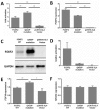Disruption of FOXF2 as a Likely Cause of Absent Uvula in an Egyptian Family
- PMID: 30917284
- PMCID: PMC6535918
- DOI: 10.1177/0022034519837245
Disruption of FOXF2 as a Likely Cause of Absent Uvula in an Egyptian Family
Abstract
This study investigated the genetic basis of an unusual autosomal dominant phenotype characterized by familial absent uvula, with a short posterior border of the soft palate, abnormal tonsillar pillars, and velopharyngeal insufficiency. Cytogenetic analysis and single-nucleotide polymorphism-based linkage analysis were investigated in a 4-generation family with 8 affected individuals. Whole exome sequencing data were overlaid, and segregation analysis identified a single missense variant, p.Q433P in the FOXF2 transcription factor, that fully segregated with the phenotype. This was found to be in linkage disequilibrium with a small 6p25.3 tandem duplication affecting FOXC1 and GMDS. Notably, the copy number imbalances of this region are commonly associated with pathologies that are not present in this family. Bioinformatic predictions with luciferase reporter studies of the FOXF2 missense variant indicated a negative impact, affecting both protein stability and transcriptional activation. Foxf 2 is expressed in the posterior mouse palate, and knockout animals develop an overt cleft palate. Since mice naturally lack the structural equivalent of the uvula, we demonstrated FOXF2 expression in the developing human uvula. Decipher also records 2 individuals with hypoplastic or bifid uvulae with copy number variants affecting FOXF2. Nevertheless, given cosegregation with the 6p25.3 duplications, we cannot rule out a combined effect of these gains and the missense variant on FOXF2 function, which may account for the rare palate phenotype observed.
Keywords: cleft palate; craniofacial biology/genetics; gene expression; oral pathology; speech pathology; transcription factor(s).
Conflict of interest statement
The authors declare no potential conflicts of interest with respect to the authorship and/or publication of this article.
Figures




References
-
- Blixt A, Mahlapuu M, Bjursell C, Darnfors C, Johannesson T, Enerback S, Carlsson P. 1998. The two-exon gene of the human forkhead transcription factor FREAC-2 (FKHL6) is located at 6p25.3. Genomics. 53(3):387–390. - PubMed
-
- Bu L, Chen Q, Wang H, Zhang T, Hetmanski JB, Schwender H, Parker M, Chou YH, Yeow V, Chong SS, et al. 2015. Novel evidence of association with nonsyndromic cleft lip with or without cleft palate was shown for single nucleotide polymorphisms in FOXF2 gene in an asian population. Birth Defects Res A Clin Mol Teratol. 103(10):857–862. - PMC - PubMed
-
- Calnan J. 1954. Submucous cleft palate. Br J Plast Surg. 69(4):264–282. - PubMed
-
- Carlsson P, Mahlapuu M. 2002. Forkhead transcription factors: key players in development and metabolism. Dev Biol. 250(1):1–23. - PubMed
Publication types
MeSH terms
Substances
Grants and funding
LinkOut - more resources
Full Text Sources

